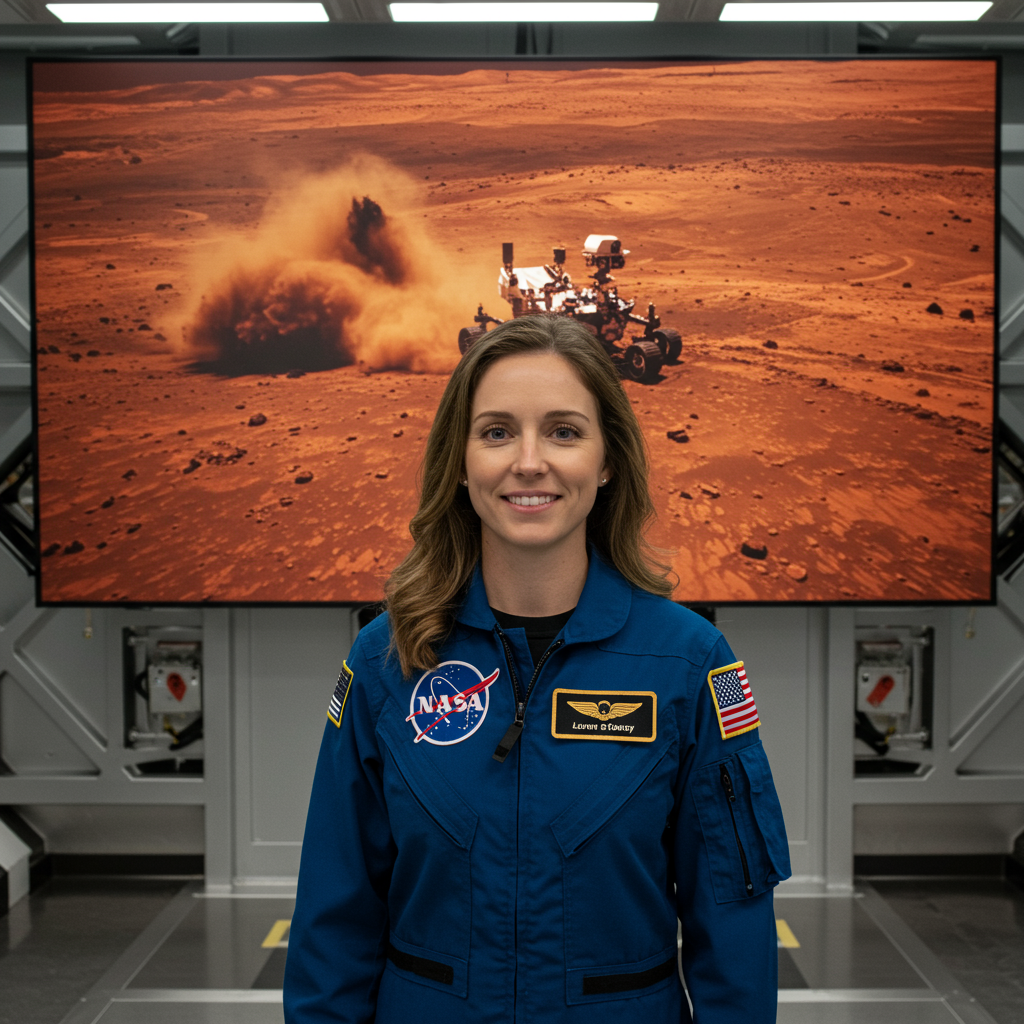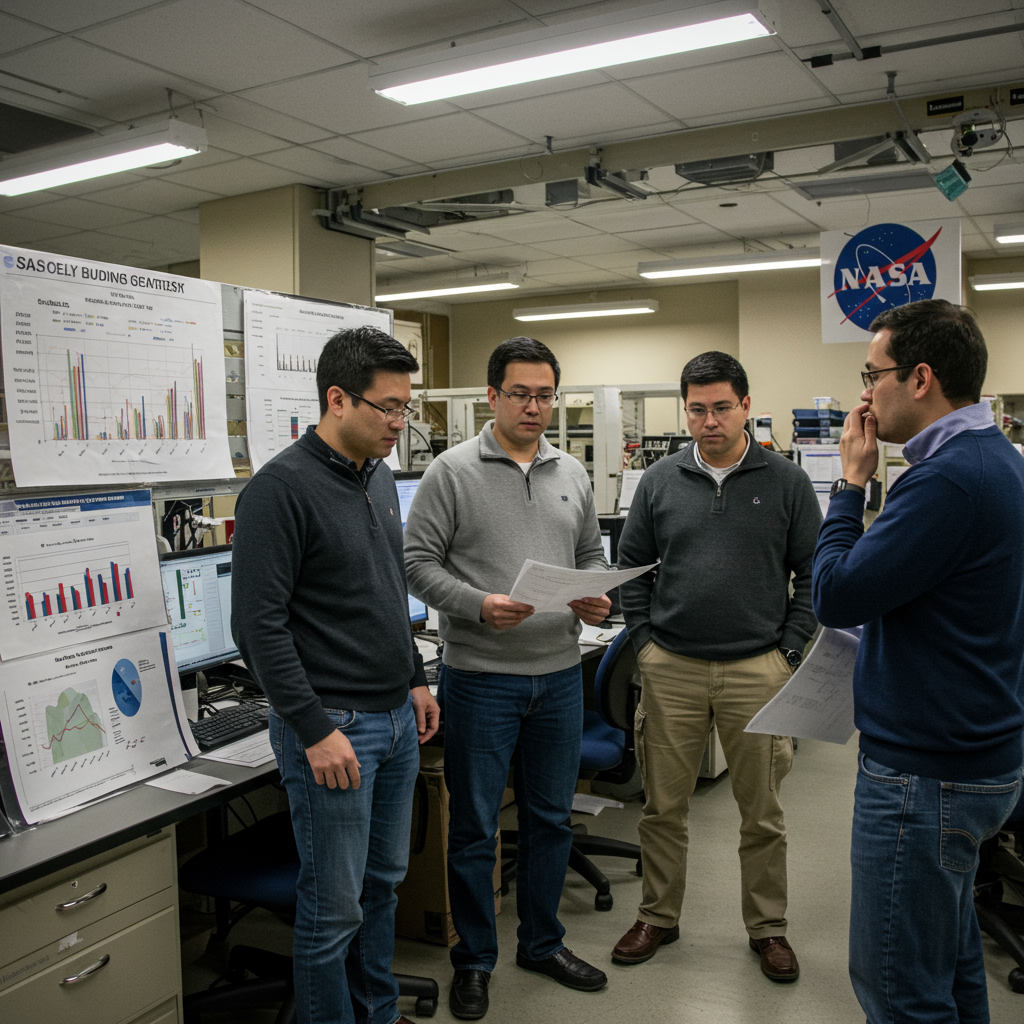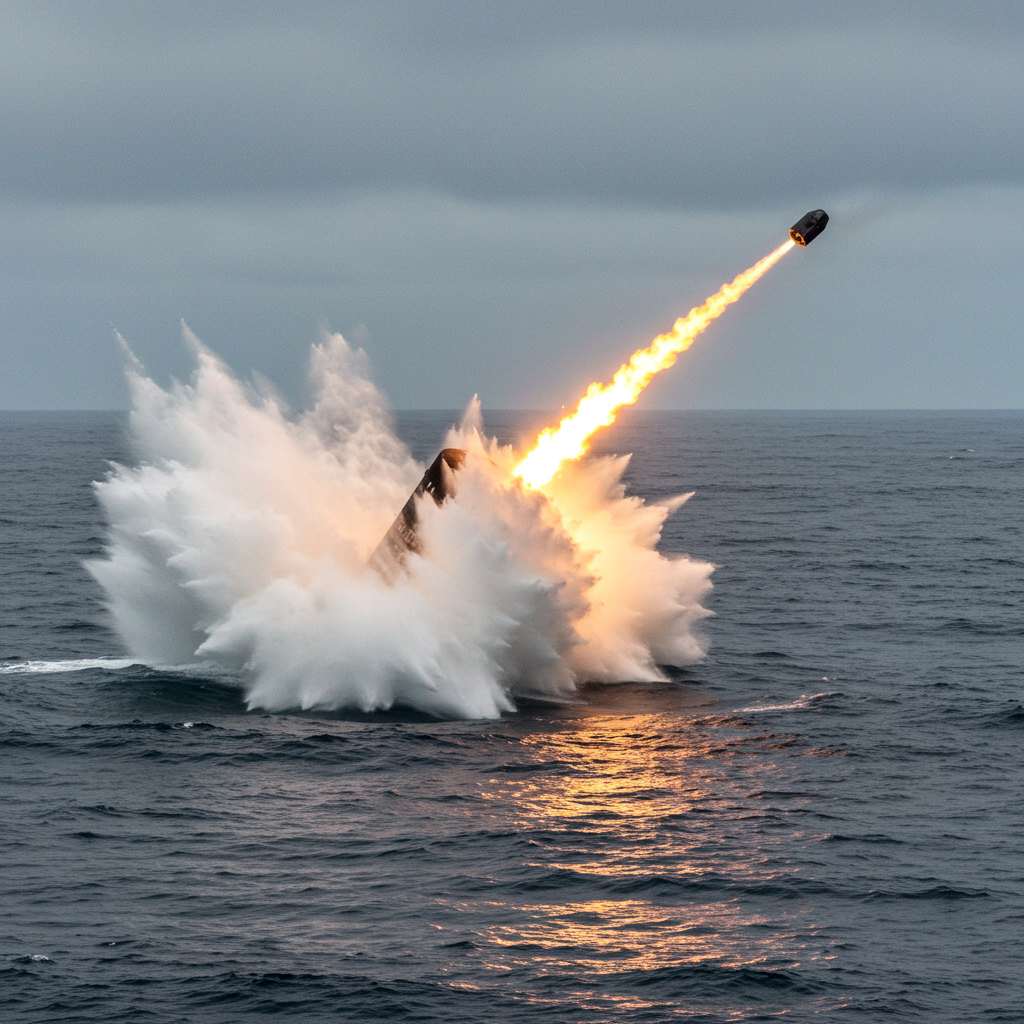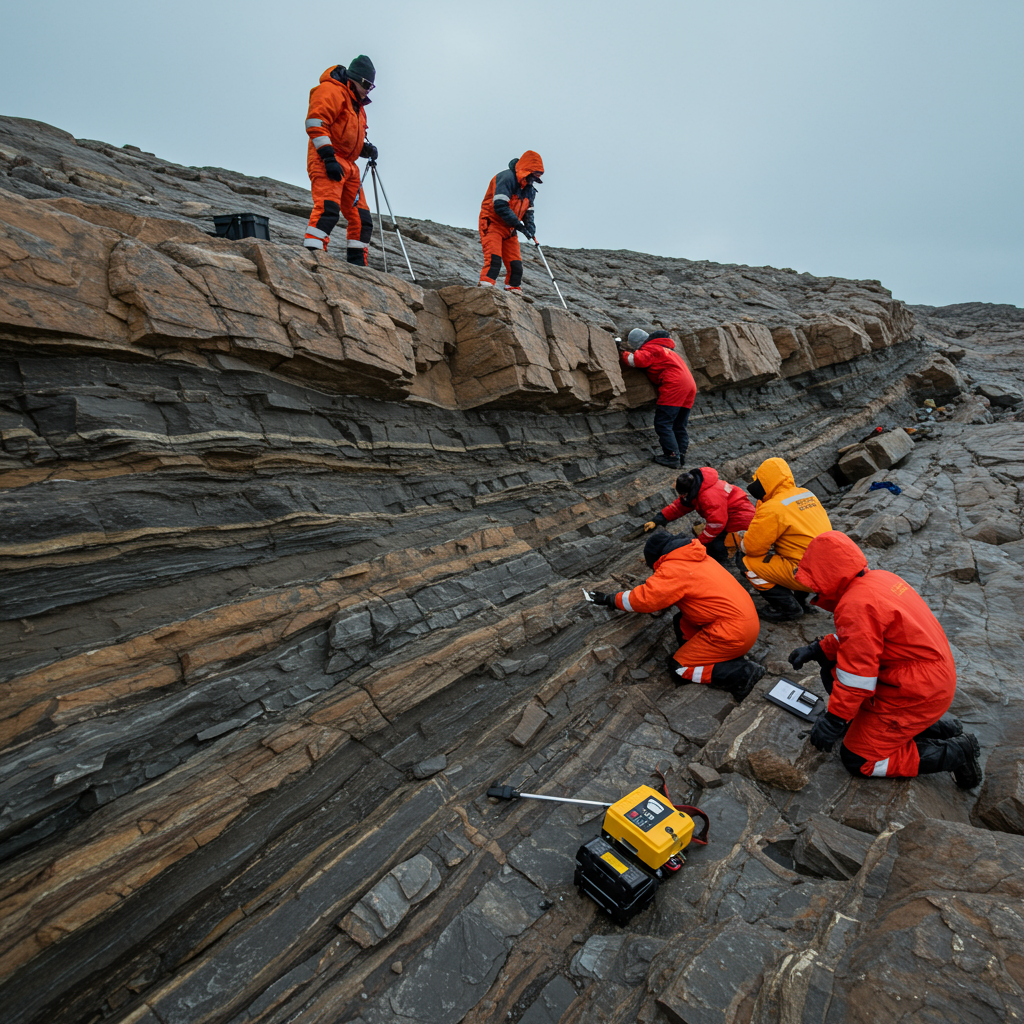NASA’s latest class of astronaut candidates includes extraordinary individuals, but few bring a resume quite like Lauren Edgar. With nearly two decades steering rovers across the Martian landscape from Earth, this accomplished geologist and former moon mission planner is now poised to embark on her own celestial journey. Her transition from a behind-the-console expert to a potential space explorer fulfills a lifelong ambition, echoing the dreams of many who gaze at the stars. This article explores Edgar’s inspiring path, her vital contributions to lunar and Martian exploration, and the rigorous training awaiting her as part of the NASA 2025 astronaut class.
A Lifelong Fascination Takes Flight
Lauren Edgar’s journey to becoming a NASA astronaut candidate is a testament to persistent dreams and dedication. Her deep connection to space began in second grade, sparked by the awe of witnessing a space shuttle launch. “I realized there were people onboard, and they were leaving the planet, and it made me wonder, ‘What else is out there?'” she recalled. This early wonder, combined with a love for the outdoors fostered by her Pacific Northwest upbringing and a keen interest in the region’s rich aviation history, firmly set her on a course toward geology and exploration.
For almost 20 years, Edgar has been an instrumental force behind some of NASA’s most ambitious missions. She spent 17 years supporting the Mars Curiosity rover and Mars Exploration Rover missions, navigating complex terrains and deciphering the Red Planet’s secrets. Her expertise wasn’t confined to Mars; she also contributed significantly to the Artemis program, designing lunar science experiments. The announcement of her selection for the 2025 astronaut class at the Johnson Space Center (JSC) in Houston came as a “huge surprise” to Edgar, who immediately shared the exciting news with her dog, Coco, before calling her husband and family. Her story highlights that a passion ignited in childhood can indeed lead to the most extraordinary destinations.
From Console to Cockpit: A New Perspective on Exploration
Edgar’s role at NASA has been multifaceted and critical. Before her astronaut candidate (ASCAN) selection, she served as deputy principal investigator on the Artemis 3 geology team, meticulously planning the scientific objectives for upcoming crewed missions to the lunar surface. Beyond design, she also facilitated geology training for NASA engineers, mission teams, and even existing astronauts. Her deep understanding of what it takes to conduct scientific research in extreme environments, from the perspective of a ground-based expert, now gives her a unique advantage.
“Previously, I was working in a role where we were asking the astronauts… to conduct certain science tasks, or deploy an instrument, or make these observations,” Edgar explained. “Suddenly I need to think through, like, ‘Oh, wow, I might get to be that person doing some of these activities,’ and you realize the high cognitive load that it takes to be operating in these challenging and remote environments while focusing on the mission objectives.” This profound shift in perspective—from instructing to potentially executing—is a challenge she eagerly anticipates. She doesn’t view this as a radical change but rather a different way to contribute to the same overarching goals of human exploration and planetary science.
Preparing for the Cosmos: Intensive Astronaut Training
The NASA 2025 astronaut class, a diverse group of pilots, engineers, doctors, and scientists, represents the agency’s future. For Lauren Edgar and her fellow ASCANs, the next two years will be spent in intensive training at the Johnson Space Center and other NASA facilities. This comprehensive program is designed to equip them with an extensive array of skills essential for spaceflight.
Training modules cover a broad spectrum of disciplines:
Spacecraft Operations: Learning to fly various spacecraft and understand their complex systems.
Spacewalk Simulations: Practicing extravehicular activities in specialized underwater facilities.
Advanced Science Education: Deepening knowledge in various scientific fields, with geology being a particular interest for Edgar.
Foreign Language Courses: Crucial for international collaborations on missions like the International Space Station.
Survival Training: Preparing for unexpected scenarios on Earth and in space.
Teamwork and Leadership: Fostering cohesion and problem-solving abilities within the astronaut corps.
NASA intentionally emphasizes diverse cross-familiarization, ensuring that all astronauts possess the skills to support each other and the mission objectives, especially in high-stress, remote environments. Edgar highlights that the composition of her class reflects the multifaceted requirements of the space program, combining pilots, medical professionals, engineers, and scientists. This collaborative learning environment will be crucial as they prepare for the unprecedented challenges of future space endeavors.
The Lunar South Pole: A Stepping Stone to Mars
A major focus for NASA’s Artemis program is establishing a sustainable human presence on the moon, particularly at the lunar south pole. Lauren Edgar views this region as a critical destination for both advancing planetary science and enabling humanity’s push deeper into space. The moon’s south pole is believed to contain significant reserves of water ice, which could be harvested for breathable air, drinking water, and rocket fuel. This makes it an invaluable resource for future long-duration missions.
“That will be a really important place to go, from both a science perspective and also having a sustained presence and using that as a launching area to test a lot of things that we’ll need for longer duration missions to Mars,” Edgar stated. NASA explicitly positions the Artemis missions to the moon as crucial stepping stones. They aim to perfect technologies and techniques on the lunar surface before embarking on the ultimate goal: sending humans to Mars.
The dream of stepping foot on the Red Planet is one that Edgar has harbored for years. During her time working with Mars rovers, she and her teams often immersed themselves in the Martian environment mentally, constantly asking, “How would I connect this landscape in my mind?” Now, this mental exercise could become a reality. Edgar expressed her enthusiasm, stating she “would welcome the opportunity if it ever came.” Her extensive background in Martian geology makes her an ideal candidate to explore the very landscapes she has studied for so long.
Encouraging Future Explorers
Edgar’s remarkable journey serves as a powerful inspiration for the next generation of space enthusiasts. She vividly remembers her niece, a second-grader, watching NASA’s live announcement of the new astronaut class—a beautiful symmetry with Edgar’s own childhood moment of inspiration. Edgar’s message to anyone aspiring to become an astronaut is clear and unwavering: “Don’t give up. Nothing is impossible, and it takes a lot of people from a lot of different backgrounds to contribute to what we’re doing here in human exploration.”
This emphasis on diversity, both in background and skill set, underscores the collaborative nature of space exploration. From pilots who navigate challenging environments to engineers who build the spacecraft, doctors who ensure crew safety, and scientists like Edgar who unravel cosmic mysteries, every role is vital. The collective expertise within NASA’s astronaut corps is its greatest strength, preparing them to tackle the unknown with confidence and capability.
Frequently Asked Questions
What is Lauren Edgar’s professional background before becoming a NASA astronaut candidate?
Prior to her selection, Lauren Edgar dedicated almost two decades to space exploration at NASA. She spent 17 years as a key member of the Mars Curiosity and Mars Exploration Rover missions, actively guiding rover operations and analyzing geological data from the Red Planet. More recently, she served as the deputy principal investigator for the Artemis 3 geology team, playing a crucial role in designing the scientific objectives for future crewed lunar missions. Her extensive experience also includes facilitating geology training for NASA engineers, mission teams, and existing astronauts, providing her with a comprehensive understanding of operational and scientific challenges in space.
What is the significance of the lunar south pole for future NASA missions, according to Lauren Edgar?
Lauren Edgar views the lunar south pole as an exceptionally critical destination for advancing both planetary science and humanity’s deeper push into space. She explains that it’s vital for establishing a sustainable human presence on the moon, serving as a “launching area” to test technologies and techniques essential for longer-duration missions to Mars. The region is believed to harbor significant reserves of water ice, which could be vital for creating breathable air, drinking water, and rocket fuel, making it a strategic resource for future exploration efforts and an important scientific site for studying lunar history.
What advice does Lauren Edgar offer to aspiring astronauts and future space explorers?
Lauren Edgar strongly encourages anyone with a dream of becoming an astronaut or engaging in space exploration to pursue it with relentless determination. Her primary advice is “Don’t give up,” emphasizing that “Nothing is impossible.” She also highlights the critical need for diverse contributions, noting that “it takes a lot of people from a lot of different backgrounds to contribute to what we’re doing here in human exploration.” This message underscores that a wide range of skills, from science and engineering to medicine and piloting, are all essential for the success of future missions, making space accessible to individuals from various professional paths.
Conclusion: A Dream Within Reach
Lauren Edgar’s selection as a NASA astronaut candidate marks a significant milestone in her illustrious career and in the ongoing saga of human space exploration. Her journey from designing science experiments for others to potentially performing them herself on the lunar surface or even Mars embodies the spirit of discovery that drives NASA. As she embarks on rigorous training alongside a diverse and highly skilled class, the prospect of an astronaut like Edgar, with profound geological knowledge of Mars, finally setting foot on the Red Planet transitions from a distant fantasy to a tangible dream. Her story serves as a beacon of inspiration, reminding us all that with passion, perseverance, and a willingness to learn, the seemingly impossible can become reality.




